#pentium cpu
Text
The PC Magazine From The former Yugoslavia ...
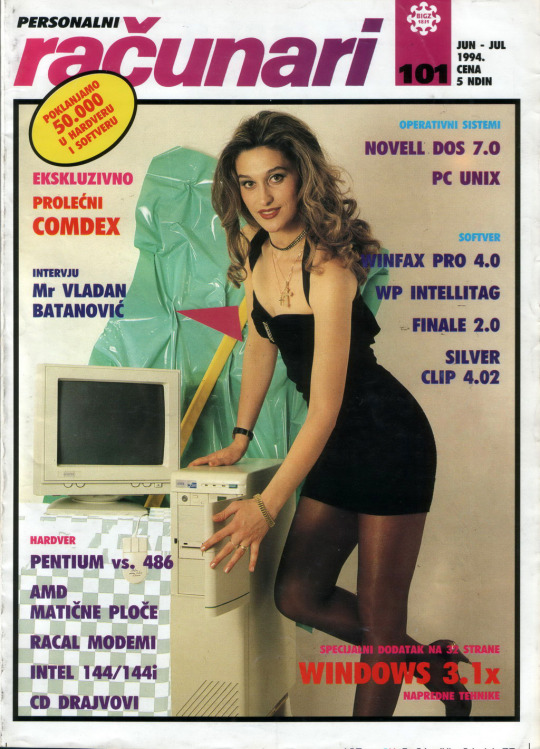
Source: www.archive.org
Post #281: Racunari, Computer Magazine, Number 101, June, 1995.
#programming#computer#pc magazine#racunari#windows#novell dos#pentium cpu#retro tech#vintage computer#retro os
7 notes
·
View notes
Text
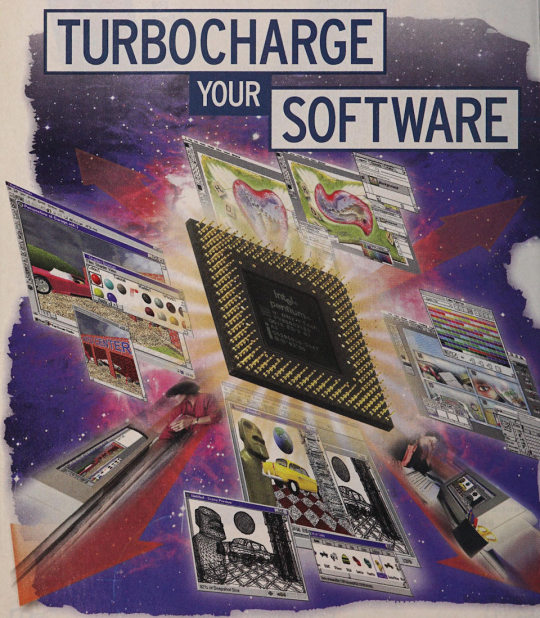
PC World - January 1997
Turbocharge Your Software
345 notes
·
View notes
Text
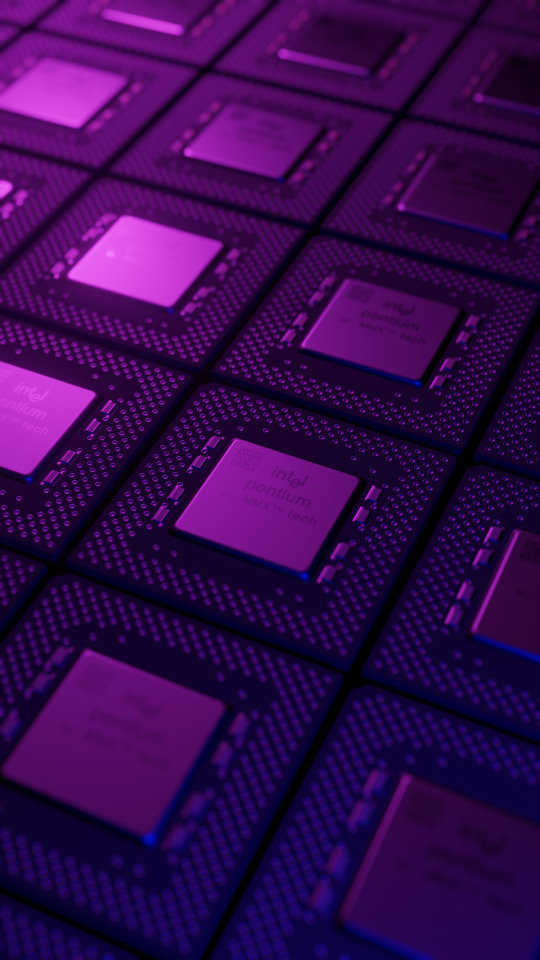
Inspired by @[email protected] over on the fediverse, I spent way too much time rendering a bunch of Pentiums
So have fun with a bisexually lit Pentium phone wallpaper I guess
#bisexual lighting#pentium#retro tech#intel#wallpaper#blender refused to use my monster of a GPU and insisted on rendering this on the CPU#blender render
2 notes
·
View notes
Text
Computer Technicians Now Naming Parts Based on Coolness Factor
In a surprising revelation that might leave you questioning the tech prowess of your local computer repair shop, a recent exposé uncovers the not-so-technical secrets of the industry. Computer technicians, it seems, have thrown in the binary towel and resorted to naming computer parts based on whatever sounds cool at the moment.
Gone are the days of meticulously analyzing data sheets and…

View On WordPress
0 notes
Text
Cleflavron is a well established and recognized name in the recycling industry. Build on a history that dates back to more than 3 generations in the plastic, papers and metal scrap business.
#Pentium pro Intel Ceramic Cpu Scrap#scrap lead acid batteries#hot washed pet flakes scrap#hdpe milk bottle scrap supplier#aluminum scrap alloy wheels scrap price
0 notes
Text
Hum... According to canyourunit, my graphics card is too out of date for BG3. So is my CPU, actually. Guess I shall... Have to wait to play it.
#NVIDIA GeForce GTX 1050 with 2gb vram#And Intel(R) Pentium(R) CPU G4560 @ 3.50GHz respectively btw#So yeah
0 notes
Text

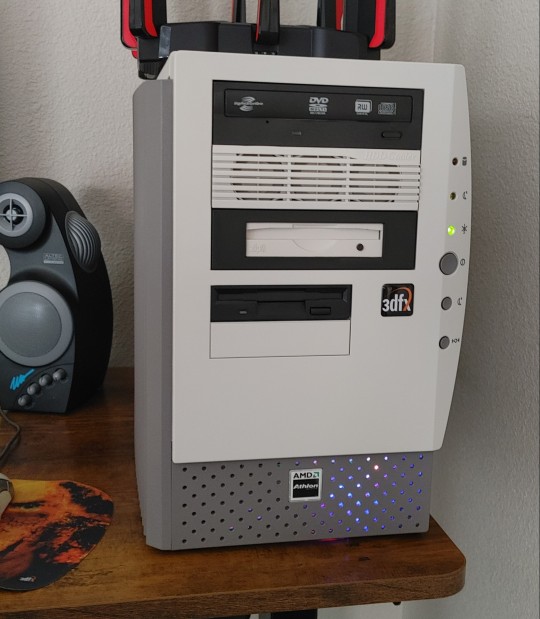
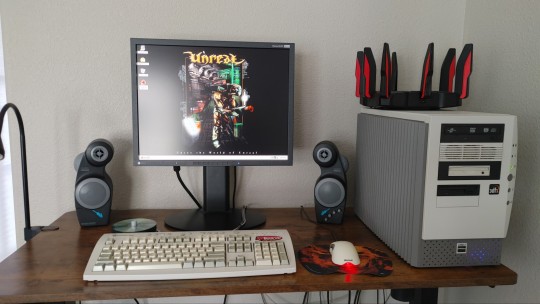
Looking sharp after a few upgrades:
Pentium II 450 -> Athlon 800 MHz
Asus P2B -> Gateway Select "Kadoka" (capacitor-less!) - not my first choice for a Slot A MoBo, but the cool guy I bought the CPU from threw it in for free! Main downside is I lost my ISA slots, so...
Soundblaster AWE 64 ISA -> Soundblaster Live! 5.1 PCI - fortunately found some great DOS drivers from Philscomputerlab and everything runs and sounds great
My beige Pioneer 16X Slot DVD-ROM bit the dust, so swapped out to an old Lite-On IDE black DVD-RW drive I had lying around in spare parts
Switched the 5.25" bay adapter and the floppy drive to black to match. Think I like this black + beige scheme vs. the mismatched various shades of beige I had with the previous components
Hope to get a VGA video capture device soon so I can start recording / posting some videos here...
#Pc gaming#Computer gaming#Dos games#ms dos games#Windows 98#Windows 95#Athlon#Pentium ii#Soundblaster#3dfx#Pc games#Computer games#Altec lansing
57 notes
·
View notes
Text
here's a question I'm not sure this is the best place to talk about:
if you were going to build a set of DOS/windows machines to play ALL PC GAMES, how many would you need?
Like, the boring answer is "ONE" but that's terrible and no, not really. Yes you can run DOSBox and such on a modern computer, but there's plenty of games in the hard-to-emulate era where they just won't run on a modern computer without a lot of patching and hacks and even then, maybe not.
So a slightly less boring answer is "TWO": One for the Hard To Emulate Era and one for NOW-GAMES. So like a 600mhz Pentium III with a Voodoo 3 and Windows 98, and a Modern Boring Machine. You play nearly everything on the modern one, including DOS games (using DOSBox and similar), but games that fit in the hard-to-emulate era, you play on the Old Machine.
BUT if you want to have a set of computers for most of the eras of PC gaming, you need more than that. Like if you were populating a museum of PC games. How many? I'm gonna say... FIVE. Maybe SIX.
An IBM XT. This is the best system for the earliest era of PC games: booters, early DOS games, anything without speed control (yes, there are turbo buttons, but they can only do so much). This is like an 8mhz with a 20mb hard drive, 640kb of ram, PC speaker only. You definitely need a joystick.
High-end 486/Pentium. This will play the rest of DOS games and nearly all Windows 3.1 games. 16mb of RAM is more than enough. A hard drive of about ~500mb (one of the first size limits), a soundblaster and maybe a GUS or MIDI device. You'll need a CD-ROM drive, for sure, even though most games won't need it.
Pentium II/III, or an AMD K6: Most early Windows games from the windows 9x era. You'll need a PCI sound card and a 3DFX card, probably a Voodoo 3 or above. You could go with an early nvidia like a geforce 2/3, but then you don't get GLIDE games. Something like 128mb of RAM, a couple gigs of hard drive, nearly all games will be CD-ROM so you want something FAST, and probably an old copy of Daemon Tools/CloneCD and a pile of no-CD cracks, because that will be NOISY.
Late single-core era: Pentium 4 or AMD Athlon 64. This is for the games that are relatively recent (2000s and onward) but have compatibility reasons that make them not run well on modern systems, because they don't handle multi-core systems, 64bit windows, or windowses newer than XP. So obviously this is going to run Windows XP, maybe tweaked Vista at a push, and it will 100% be the 32bit version. You're gonna have like 1-2 gigabytes of RAM, a few hundred gigabytes of hard drive space to a terabyte, and a video card like a GeForce 8-series or a Radeon HD 3000.
Boring modern machine. Fastest CPU/GPU, most RAM, biggest HD, etc that you can afford. Run Windows 10 or 11, it doesn't matter.
And the only reason I say "five or six" is because you might want to stuff another computer in, call it PC 3.5: Basically a fast Win9x machine, but this one uses an nvidia/ATI GPU instead of a 3DFX GPU. This'll be a machine for high-end Win9x/ME games that need more graphics power than a 3DFX card can manage, but don't work on an XP machine. I don't know for certain there are games in that area, but I wouldn't at all be surprised.
143 notes
·
View notes
Text
Other Sides of the Coin
That phrase is the guiding philosophy for my computer collection: lets unpack it.
First off, I've been around PC's all my life. While I don't remember it, the family's XT clone, then a 486 and onwards. I know PC's in and out. While they are fascinating machines in their own right, they aren't the only computers out there.
So what is out there? Many systems, all shapes and sizes, commercial and enterprise machines that never see the light of day until they are scrapped and the consumer machines meant for the home. For me the commerical and enterprise machines don't hold that much allure, they are curiosities for sure and one of two of them may find their way into my collection but that's for later. I focus on consumer machines currently.
But wait, there are many of those machines!? How do I keep myself from drowning in silicon and rocks we tricked to think?
Representatives.
You'll see this more in the earlier systems that had a vast array of systems that either competed with the example in my collection or preceded it. CP/M systems were many in a vibrant competitive ecosystem, I simply cannot own an example of every kind that is out there, so instead I settle on a well known unit and say it represents what the other units are.
Lastly, I sort the collection into bittiness and while my decisions are arbitrary and subjective, there is method behind them:
8 Bit Systems: Everyone will think of systems like the C64 but I also class systems like the PC/XT and the TI99/4a in the same category.
Limited color palettes and sounds
expectation to load software from 5.25" disks, cassette tape or cartridge ROM's.
BASIC in ROM.
Majority of the IO or internal operations done in 8 bits.
Limited RAM to 1MB or less.
Examples in my collection:
Commadore C64/C128
IBM PC/XT
Apple IIeP (Representative for the Apple II line)
Kaypro 4-84(Representative for the CP/M ecosystem.)
Texas Instruments TI99/4a
Timex Sinclare 1000
Missing:
Atari 8 bit. :(
16 Bit Systems: Here the lines start to blur and you'll see why.
Enhanced colors and sounds
Expected to load software from hard drives and 3.5" disks, gone are cassettes and cartridges for computers.
Faster CPU's
Majority of the system conducts itself in 16 bit operations.
RAM expanding above 1MB.
Expected to run GUI's
Examples:
Commadore Amiga 1000
Atari ST520
Apple IIgs (16 bit CPU but does everything in 8 bits)
Apple Mac Plus
IBM PC/AT (HA)
Clone PC/386 (full 32 bit CPU but all IO is 16 bits)
32 Bit Systems (Early)
Why do I say early? The 386 is a 32 bit CPU, but it's in the 16 bit category. And to that, I say the 386 didn't have a standard 32 bit expansion slot for it to use, a CPU like the 486 had two.
High color resolutions, and high fidelity sound capabilities.
Hard drives are standard equipment now.
CPU's pushing mid double digit speeds.
Multiple megabytes of RAM are expected
GUI's and multimedia.
CD-ROM is the new hotness
Examples:
Gateway 2000 4dx2/66V
Apple Performa 630CD
Missing:
Commadore Amiga 2000/3000
Atari Falcon
32 Bit Systems (Late)
At this point we are seeing the foundations of the modern computers as we know them today.
Unlimited Colors and Resolutions
Hard drives pushing dozens of gigabytes
RAM in the hundreds of Megabytes
Advanced CPU's with SIMD instructions running at several hundreds of Mhz.
Advanced OS's
Examples:
Compaq Deskpro EN866
Apple Imac G3(750)
Missing:
To be decided
The tail end:
Here the lines blur to the point it's difficult to call, so it's here where I plant the end of my collection, at least for now.
The modern computer as we know it has been invented and we start to shed the legacy of decades of computers that came before them. It is here that the coin has become flat. Apple is still doing their own thing with the Power PC's but will soon drop them in favor of x86. Intel is scratching it's head at the Pentium 4, AMD is ruling the roost with it's wildly successful Athlon processor.
There may be a home for systems in this era in the future as memories coalesces into nostalgia. There is already a root forming with two systems that blur the late 32 bit system lines, a Pentium 4 XP box and a Sawtooth G4.
Perhaps I'll get a G5. That would really blur the lines.
Thank you for reading.
Here is were I will put my wish list. Some of these systems are my biege whales, I would love an Amiga 4000T but at the costs of these machines, it is unlikely without shelling out as much as a decent used car.
Commadore Amiga 4000T
This machine doesn't have a direct comparison with either a PC or a Macintosh, but there are contemporary machines that would be added to the collection with it.
IMSAI or Altair 8800
Mostly for it's front panel toggling goodness. I'd reasonably be just as happy with something like a modern clone for me to twiddle the switches but still have something usable afterwards.
#retro computing#old computers#apple computers#cbm#pc#commodore amiga#atari#collection#philosophy#nostalgic#so nostalgic it hurts
17 notes
·
View notes
Text

The Microsoft Sidewinder Force Feedback joystick is still a very well regarded device to this day, as LGR demonstrates in his recent video.
It's a device I would have loved to have owned and experienced back in the day, but at the time I didn't have an income that would have made that possible. So it's a real delight being able to pick up such a item now.
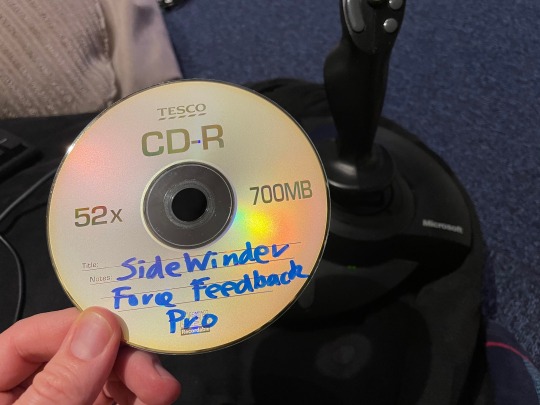
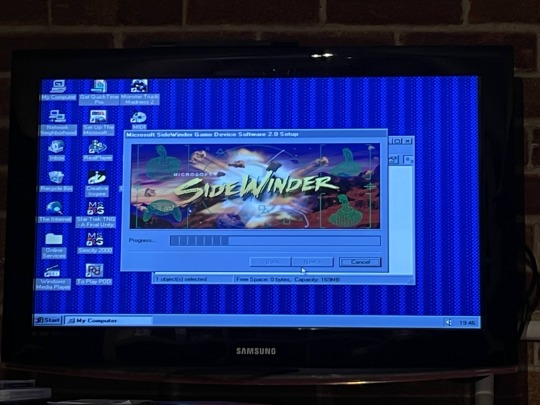
I picked mine up on eBay without any of software or the power adapter. However such things can easily be purchased separately or in the case of the software replicated on a classy looking CD-R.
My Packard Bell with it's 200MHz Pentium processor seemed like a good place to start so I went ahead and installed the software.
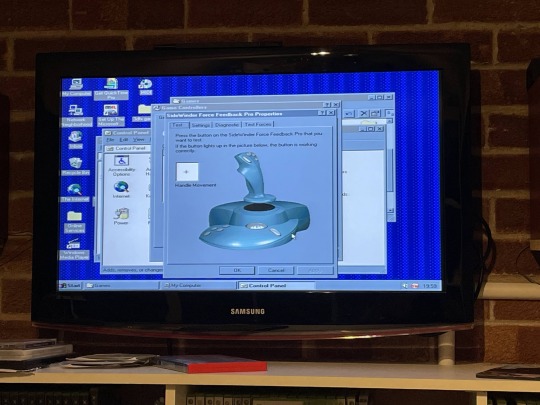
Unfortunately although the joystick was detected, when I tested it in the control panel it didn't seem to detect movements smoothly. Worse still the various force feedback demonstrations didn't work! Was my joystick broken?
I decided to double down and ordered a Force Feedback 2 joystick, which is slightly smaller whilst also using a USB interface over the originals gameport connector.
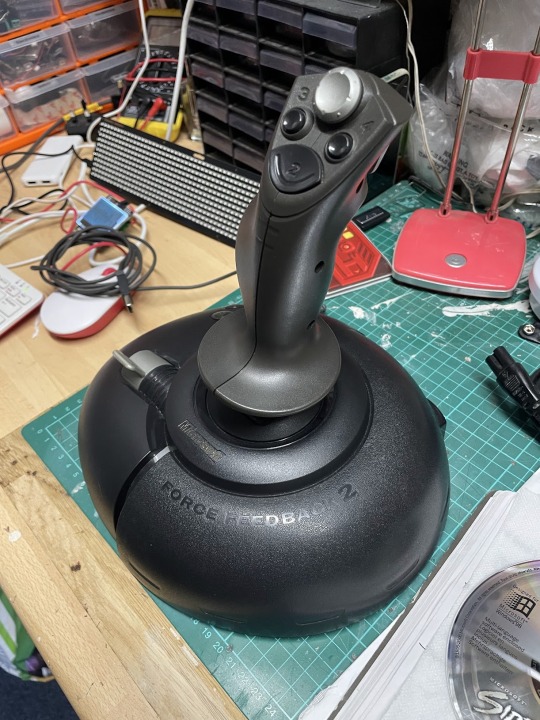

However this newer joystick didn't want to play ball with my Athlon XP based system. What is going on? Have I just bought two broken joysticks?
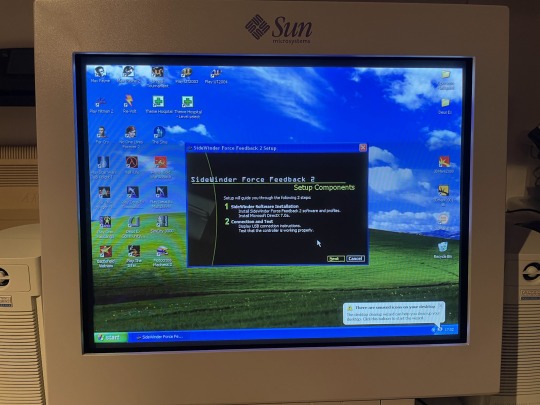
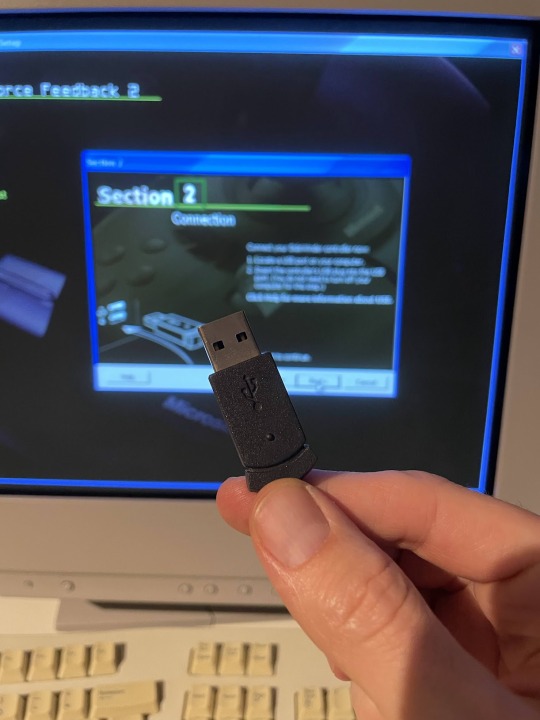
I also decided to try the original joystick on my slightly more powerful Pentium III 600MHz machine. Perhaps the slower CPU just didn't have enough grunt, even though it met the minimum specs for using the device.
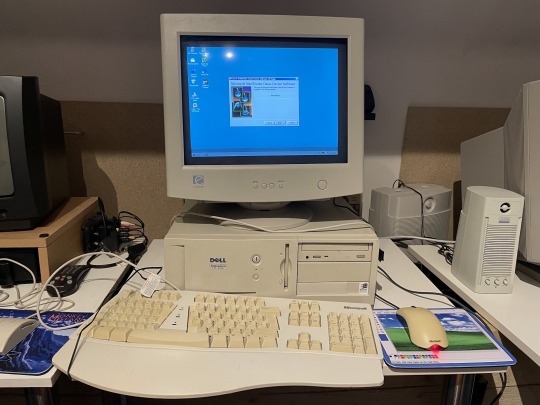
Finally I was rewarded with the behaviour I'd expect from the device. The demos worked and when I tried it in games it also worked perfectly.
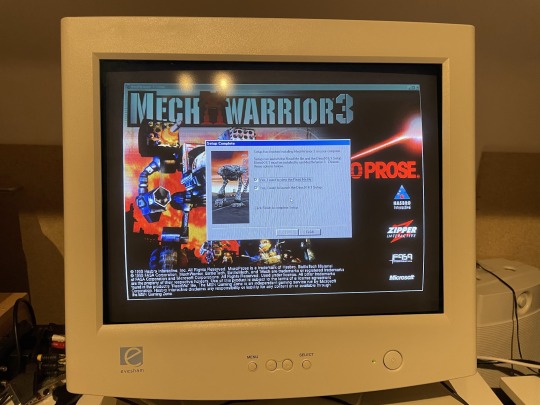
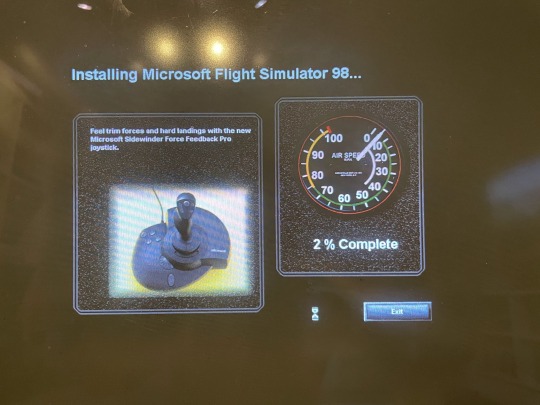


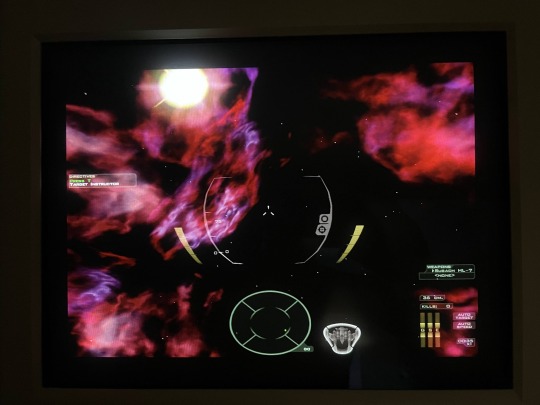
Freespace 2 with force feedback? Wow, I'd waited a long time to experience that.
Recommended!
7 notes
·
View notes
Note
When did you first get into tech?
i managed to delete all the desktop icons and crash explorer.exe on my dad's pentium II/win98 machine by dragging icons offscreen and bonking the keyboard w/ a plastic toy hammer...soo i've always been drawn to it i think.
i was given a compaq deskpro (p450 i believe ??) that had an entire pentium iii, and i think 128MB of some kind of ram (idk if it was ddr or rdram or sdr or whatever other wacky things existed back then) and looked kinda like this
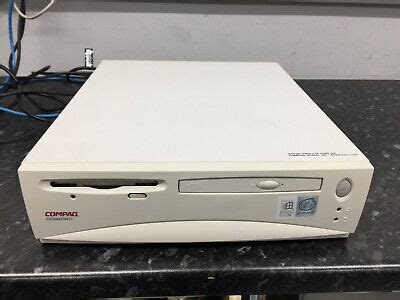
well, i say given, it was a supervised use dick-around-on-this-so-you-don't-fuck-up-my-pc-i-need-for-emails situation. it had Windows ME (what a beautiful cursed OS), there was this cool art program i've completely forgotten the name of but i loved, and we put opensuse 10.1 on it at some point. trying to play frozen bubble (open source clone of puzzle bobble) using software rendering was painfully slow, though i had no idea that's /why/ it was slow at the time.
i think i just took to tech stuff and so i got to do more of it, and kept trying to learn things. there was a magazine in weekly installments for building a robot, i tried and failed to learn visual basic, c# and another language (i forgor), created an unholy mint-debian hybrid years before LMDE existed, built one of those bundled systems maplin used to sell to use as my own pc for homework (this is pluug, my current seedbox), learned to solder (badly) then forgot how and relearned as an adult (to fix pluug, actually) and a bunch of other stuff i'm forgetting.
but like learning to code is a relatively recent thing for me, as is learning the basics of cpu design and how hardware actually works, even a gear focus on the musical side is within the last 5-7 years.
6 notes
·
View notes
Text

PC World - May 1997
226 notes
·
View notes
Text
Anyways speaking about speed and thermal issues, it's the middle of summer here, so pretty much everyone who runs a computer here has to keep an eye on their temps rn (the multiple 40°c+ days have not been helping). But surprisingly my ancient little XP computer that probably has never had its thermal paste replaced, is small form factor, and probably has 2 fans (3 if you count the disc drive, which probably moves the most air) has not gotten over 30°c. From the same era where pentiums were getting to "melting themselves temperatures" and laptop CPUs could burn your leg (may help that its using an AMD cpu). My own XP pc back then I distinctly remember using as a heater sometimes. Like I know it has everything to do with the fact that I can't get its GPU running (my old XP pc had TWO (2) gpus in addition to integrated) but I find it fascinating that this nearly 20 year old pc, not only refuses to die, but seems to be kinda thriving actually.
Like yeah it's slow (one time I thought I killed it by messing with windows a bit too much, but it turns out that's just how long it takes to boot into safe mode and I went "Oh wait that's right it's just slow lol") but if my surface dies (it will eventually) and it's too hot to run my Thinkpad, this thing will be happily puttering along as I churn out a word doc.
#tetranymous.txt#granted the lack of gpu makes running things kinda hard right now#and the screen tearing is... in the basic ui.#and i cannot get its network adapter to work (which is probably for the better)#i still cant get over the fact that my previous laptop (the duct tape computer) took longer to install windows than this thing#that was easily 10 years older. it wasnt even close#xp pc took idk like an hour and a half to reinstall xp#and the duct tape pooter i had to leave overnight andvit still wasnt done#[LESSON ACCUIRED] Dont buy a computer ever; adopt dont shop
2 notes
·
View notes
Note
What's your biggest hyperfocus and how did you discover it?
I had to think on this for a minute because I wasn't sure if it was true anymore. If it wasn't this then it would be something like MLP or motorcycles (it was tempting to say motorcycles!).
I think it's fair to still say personal computers, though. I'm not sure about when my first contact with them was, but I know a major development was when my dad bought our first PC, an IBM AT clone. (I think I still have most of the parts for it!) I would have been like, 7-9 years old at the time and I was fascinated with it. I ended up breaking it as a kid, because I was trying to figure out what all the DOS 4.0 commands did by running them... when I got to FDISK I rendered it unbootable by pressing buttons. A friend of my father's recovered the situation (I think he used Norton Utilities to recreate the partition table).
I can name pretty much every PC that we had as a family or I had personally:
-Aforementioned IBM AT clone (8088 with a Tatung Hercules monitor, DOS 4.0)
-386SX that came from who knows where (Went straight from orange Hercules to VGA colour!!! Windows 3.1)
-Tandy 1000HX (long term loan from a friend)
-Cyrix 586 (dogshit computer - had fake onboard cache, a common scam at the time, crashed constantly. Windows 95)
-468DX4 (think I built this from scrounged parts. Win95, slower than the other PC but way more stable)
-Pentium II 233 (also built from scrounged parts. First PC I overclocked, gaining 33 mHz! So fast!!! Windows 2000... but later got repurposed as a Linux-based router)
-AMD Duron 800 (built with NEW parts - parents gave me a budget to built a family computer. Windows ... 98? XP? Probably changed multiple times)
-AMD Athlon XP 1600 (built with NEW parts - I truly don't remember where I got the money in highschool to put it together, but it was probably every penny I had)
-AMD Athlon 64 X2 4400+ (admittedly I didn't remember this offhand... but I did have the physical CPU lying around to check. bought off the shelf very cheap as old stock for my parents to use. Windows Vista. Later upgraded to an Phenom X4, also for very cheap. This PC still lives running Windows 10 today!)
-Intel Core 2 Duo Q6700 (built in a cute Shuttle XPC chassis. Eventually burned out a RAM slot because apparently it wasn't rated for 2.0V DIMMs. Windows 7)
-Intel Core i5-2500K (I used this computer for YEARS. Like almost a decade, while being overclocked to 4.4 gHz from nearly the first day I had it. Windows 7/10)
-AMD 5800X (Currently daily driver. Windows 10)
Not mentioning laptops because the list is already long and you get the point.
I actually did attempt to have a computer related career - in the mid 2000s I went to a community college to get a programming diploma, but I dropped out halfway. There was a moment, in a class teaching the Windows GDI API, where I realized that I had no desire to do that professionally. I did learn things about SQL and OS/400 that randomly came in handy a few times in my life. I did go back and successfully get a diploma in networking/tech support but I've never worked a day in that field.
Unprofessionally though, I was "that guy" for most of my life - friend of a friend or family would have a problem with their PC, and I would show up and help them out. I never got to the point where I would attempt to like, re-cap somebody's motherboard, but I could identify blown caps (and there was a time when there was a lot of those). As the role of PCs has changed, and the hardware has gotten better, I barely ever get to do this kind of thing these days. My parent's PC gathers dust in the corner because they can do pretty much do everything they need on their tablets, which they greatly prefer.
Today though... I used to spend a lot of time reading about developments in PC hardware, architectural improvements, but it doesn't matter as much to me anymore. I couldn't tell you what the current generation of Intel desktop CPUs use for a socket without looking it up. A lot of my interest used to be gaming related, and to this day the GPU industry hasn't fully recovered from the crypto boom. Nearly all of the games I'm interested in play well on console so I just play them there. I still fiddle with what I have now and then.
It is fun to think back on various challenges/experiences with it I've had over the years (figuring out IRQ/DMA management when that was still manual, Matsushita CD-ROM interfaces, trying to exorcise the polymorphic Natas virus from my shit). Who knows, maybe I'll get to curate a PC museum of all this shit someday haha.
2 notes
·
View notes
Note
Those 2x8 packs'll getcha. Just check the clock speed for the one odd stick out and make sure it isn't going to hold you back too much.
you'd think that would be the bottleneck, but both are sets of ddr-1600. not that it matters, for some reason the cpu doesn't support anything over 700 mhz and that's not a speed either set of ram supports. but it does work properly. somehow.
did i mention this was a pc made of trash? i just got lucky the cpu the "legendary" pentium anniversary addition, which means it's over clockable, and even there it looks like i won the silicon lottery.
it'll never game but it can run a browsers and with the lovely gt 710, it can play basic video without using too much power.
8 notes
·
View notes
Note
Hey! I was able to download finfin (you've done a huge service for the community by the way, thank you so much), but i've run into massive amounts of lag when entering new contactee and the main game. Is there any way to fix this, or at least decrease the amount of lag?
When you say lag, is it running incredibly slow, or is the screen just stuttering?
For whatever reason, when the screen is moving from side to side or up and down in the menu and new contact it can appear laggy but this is normal and occurs on real hardware as well, its just an issue with how Windows 98 is handling the rendering, but it doesn't effect anything in game outside of the menus.
If that's not what you mean, and there is a significant amount of lag then your best bet is probably to alter the launching script to be a bit less resource intensive.
If you right click the batch file and select edit, it should open up in notepad. Replace these lines
-m 256 ^
-cpu pentium3 ^
With
-m 128 ^
-cpu pentium ^
This will instead use 128 mb of ram, and and emulate a pentium 1 instead of a pentium 3. Keep in mind this is emulation, even the slowest modern PCs in terms of sheer performance demolish the requirements for Fin Fin, but with emulation there is a lot of performance lost in the "translation" between machines.
This is still be enough for the game to run completely fine, but should be less intensive on the host machine, which is probably the source of lag, as all releases use the same emulated system. It will likely decrease performance elsewhere in things like loading time though, so keep that in mind.
If this does work for you, please send another ask letting me know! Ill upload altered launching .exes with the changed parameters to the MEGA folder.
2 notes
·
View notes